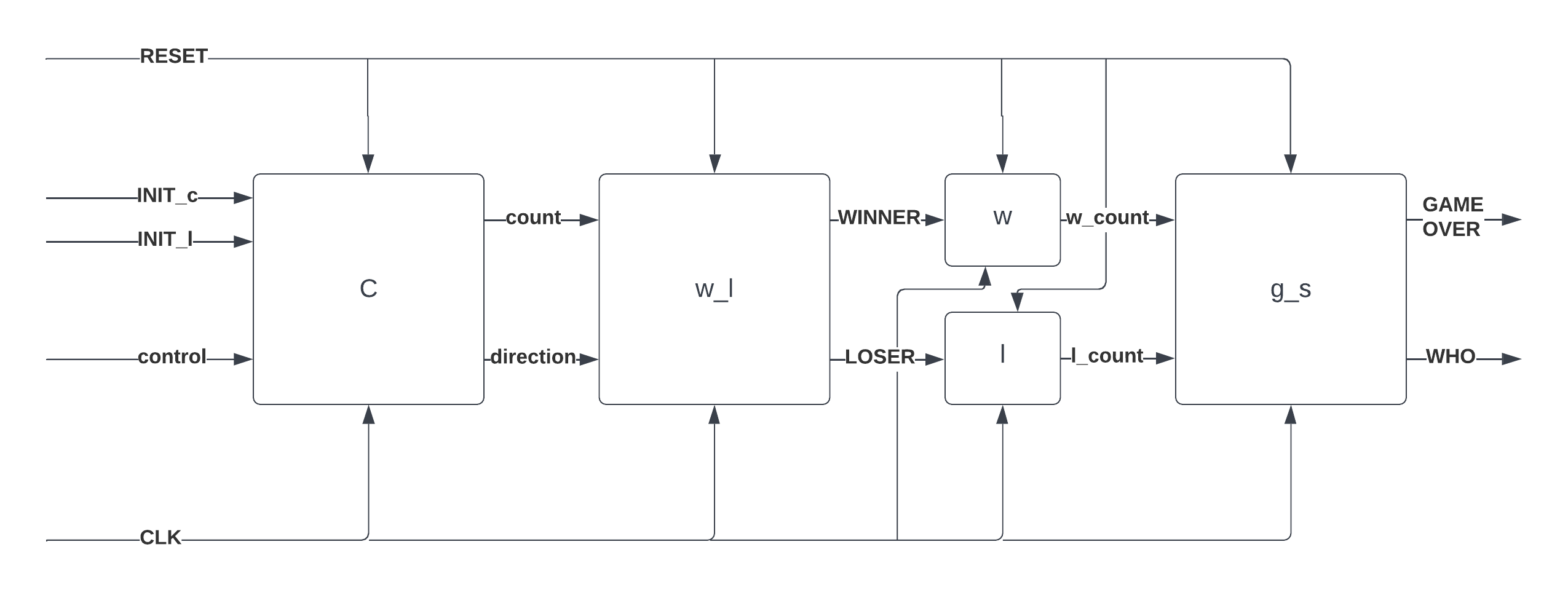Here I implement a multi-mode counter that can:
- Count upwards
- Count downwards
- Count with variable step
- Can be loaded with an initial value
- Can be reset
Then using the count of this counter, we simulate a game between two players (WINNER and LOSER) then display the winning player.
Changes the count after each clock and outputs the direction of counting (up or down) and the current count.
Outputs high on all winner bits when all input count bits are high and low on all LOSER bits whenever all count bits are low.
We have two instances of this module, one called w and the other is l. w module takes WINNER signal as its input and w_count as its output. While l module takes LOSER signal as its input and l_count as its output.
Each of these modules receives a signal (WINNER in case of w and LOSER in case of l) and the output of the module is incremented whenever the input signal is high.
This last module takes both w_count and l_count, and the owner of whichever signal reaches the preset limit first is declared as winner. The outputs of the module are:
- Set when game ends.
- Declaring the identity of the winner.
- INIT and RESET are synchronous signals.
- When INIT is set, its value is loaded in the next cycle and the counter proceeds to continue its operation in the next cycle.
- Overflows are not counted for the WINNER or the LOSER.
- If an INIT value is loaded and the max value is reached, the counting restarts at zero.
- User can freely set the size of the counter and the winning score.
This was part of a class project of a digital verification course, Taught by Dr. Ayman Wahba and Eng. Rizk Tawfik.
